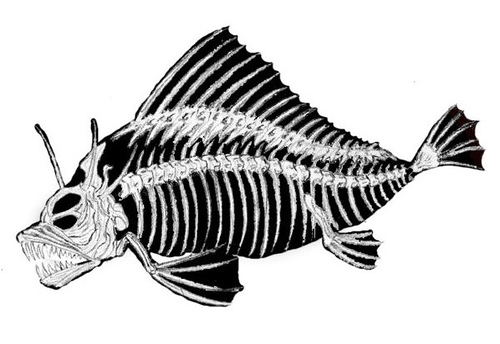Account of an encounter with a titanic shark, recorded by Australian naturalist David Stead in his 1963 book Sharks and Rays of Australian Seas:
In the year 1918 I recorded the sensation that had been caused among the “outside” crayfish men at Port Stephens, when, for several days, they refused to go to sea to their regular fishing grounds in the vicinity of Broughton Island. The men had been at work on the fishing grounds — which lie in deep water — when an immense shark of almost unbelievable proportions put in an appearance, lifting pot after pot containing many crayfishes, and taking, as the men said, “pots, mooring lines and all”. These crayfish pots, it should be mentioned, were about 3 feet 6 inches in diameter and frequently contained from two to three dozen good-sized crayfish each weighing several pounds. The men were all unanimous that this shark was something the like of which they had never dreamed of. In company with the local Fisheries Inspector I questioned many of the men very closely and they all agreed as to the gigantic stature of the beast. But the lengths they gave were, on the whole, absurd. I mention them, however, as an indication of the state of mind which this unusual giant had thrown them into. And bear in mind that these were men who were used to the sea and all sorts of weather, and all sorts of sharks as well. One of the crew said the shark was “three hundred feet long at least”! Others said it was as long as the wharf on which we stood — about 115 feet! They affirmed that the water “boiled” over a large space when the fish swam past. They were all familiar with whales, which they had often seen passing at sea, but this was a vast shark. They had seen its terrible head which was “at least as long as the roof on the wharf shed at Nelson Bay.” Impossible, of course! But these were prosaic and rather stolid men, not given to “fish stories” nor even to talking about their catches. Further, they knew that the person they were talking to (myself) had heard all the fish stories years before! One of the things that impressed me was that they all agreed as to the ghostly whitish colour of the vast fish.
Stead draws no conclusions, but writes, “The local Fisheries Inspector of the time, Mr Paton, agreed with me that it must have been something really gigantic to put these experienced men into such a state of fear and panic.”




